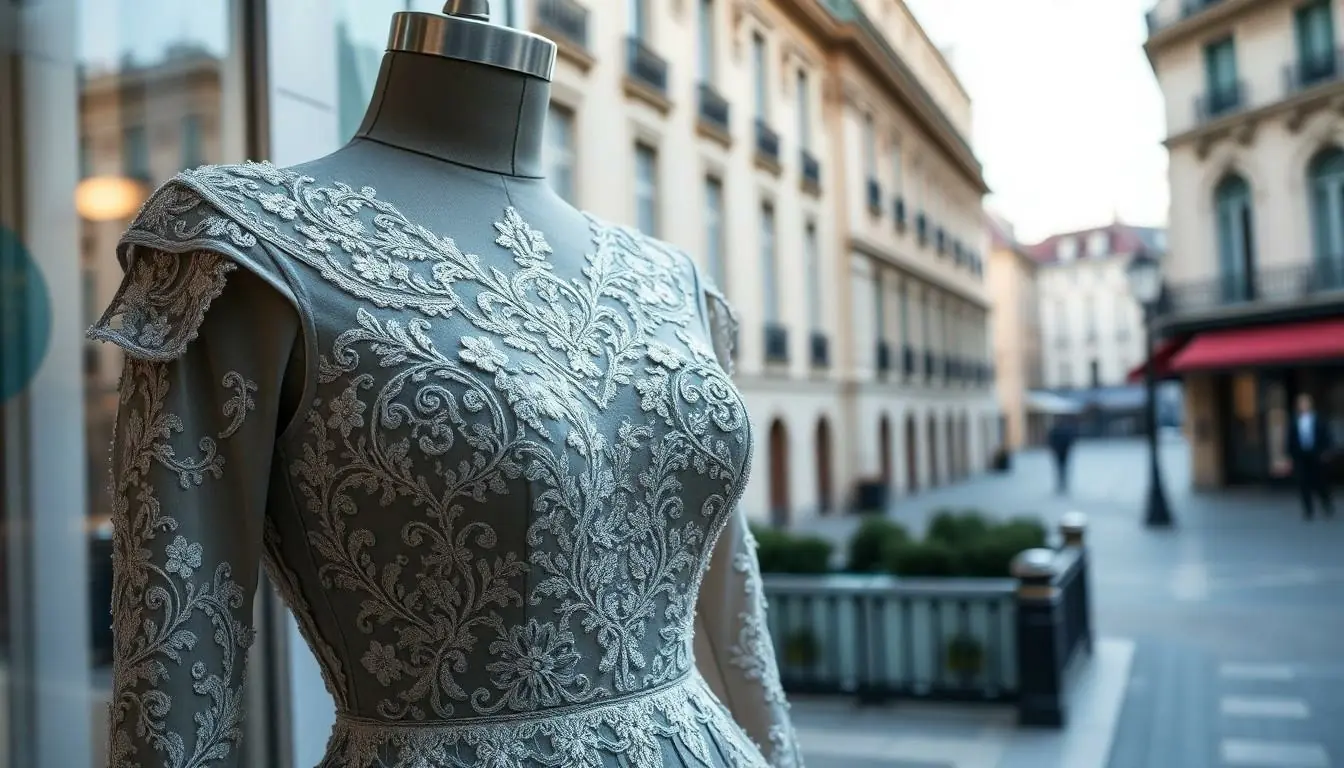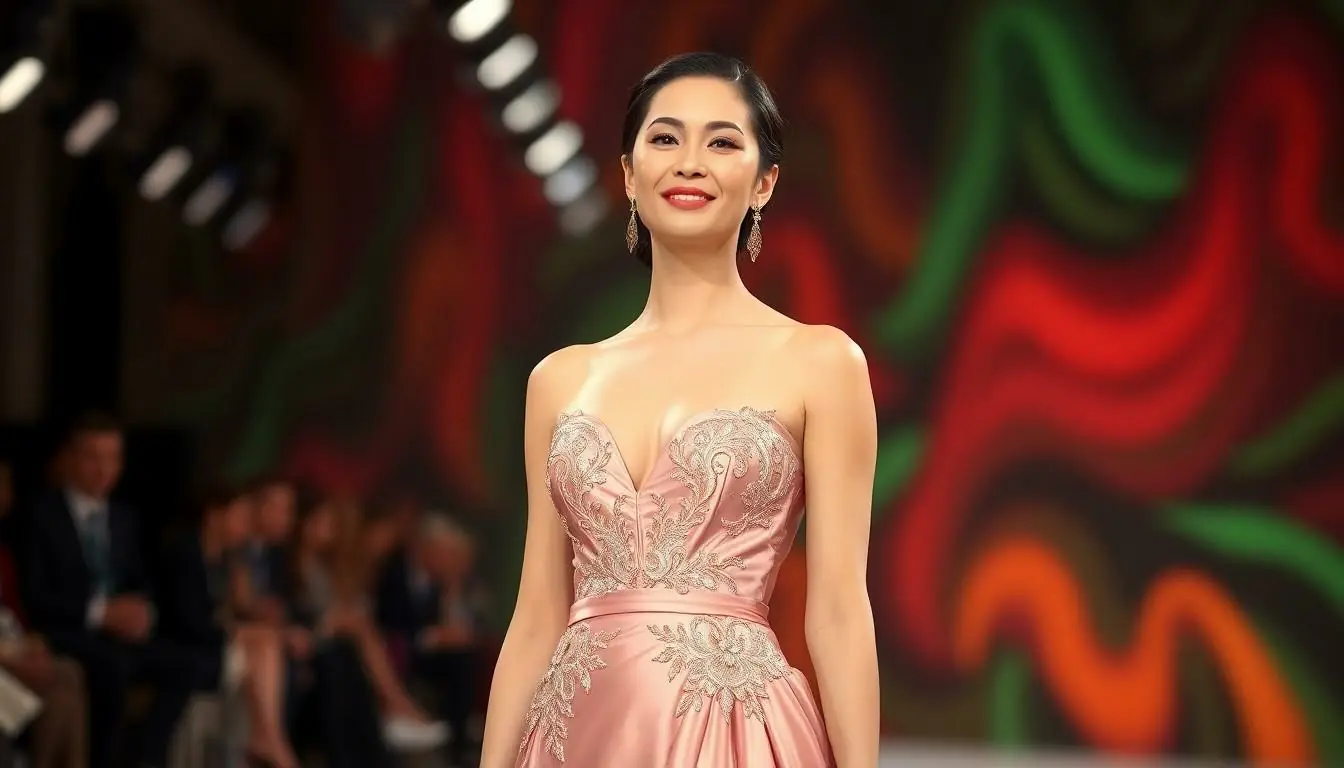Table of Contents
ToggleFashion lovers often find themselves in a stylish tug-of-war between couture and haute couture. While both terms might sound like they belong in a fancy French restaurant, they actually represent two distinct worlds in the realm of high fashion. Couture is all about personalized garments crafted with exquisite attention to detail, while haute couture takes it up a notch with its exclusive, one-of-a-kind creations that can make even the most seasoned fashionista swoon.
Overview of Couture
Couture represents a level of fashion that emphasizes personalized design and craftsmanship. Distinct from haute couture, this term encompasses a broader spectrum of tailored clothing created with attention to detail.
Definition and Characteristics
Couture includes customized garments tailored to fit individual clients’ measurements. Often crafted by skilled artisans, these pieces showcase high-quality fabrics and intricate techniques. Personalization plays a crucial role, resulting in unique designs that reflect each client’s style. Exclusive production sets couture apart from mass-market clothing, ensuring that garments are made in limited quantities for an elevated experience.
Historical Context
Couture has roots in the 19th century, originating in Paris as a response to changing fashion trends. During this period, designers began to create one-of-a-kind pieces for aristocrats and wealthy clients. Fashion houses emerged, establishing a reputation for bespoke services and high-quality craftsmanship. The evolution of couture continued through the 20th century, adapting to social changes while maintaining its core focus on luxury and personalization. Modern iterations celebrate this rich heritage, blending traditional techniques with contemporary aesthetics.
Understanding Haute Couture

Haute couture signifies the pinnacle of luxury fashion, characterized by its exclusivity and artistry. The term translates to “high sewing” or “high dressmaking,” emphasizing intricate craftsmanship and unique creations.
Definition and Characteristics
Haute couture showcases exquisite garments crafted specifically for individual clients, often tailored to exact measurements. Each piece undergoes careful construction using the highest quality fabrics, with artisans dedicating time to detail. Notably, every design stands as a one-of-a-kind work of art, reflecting the client’s personal style. Often, these items feature intricate embellishments that highlight the skill of the designer. The production of haute couture garments occurs in limited quantities, enhancing their allure and exclusivity.
Historical Context
Haute couture traces its origins to the mid-19th century, with Paris as its epicenter. Charles Frederick Worth, often regarded as the father of haute couture, established his fashion house in 1858, setting new standards for elegance and individuality. Fashion houses grew rapidly, serving affluent clientele eager for bespoke creations. Over the decades, haute couture evolved alongside social movements, from the royal court to modern influencers. The recognition of haute couture by the Paris Chamber of Commerce further solidified its status, ensuring that today’s designers adhere to strict guidelines celebrating this rich tradition.
Key Differences Between Couture and Haute Couture
Couture and haute couture present distinct characteristics that set them apart in fashion. Understanding these differences reveals the nuances of high-end garment creation.
Design and Craftsmanship
Couture emphasizes personalized design and meticulous craftsmanship. Skilled artisans create garments tailored to individual measurements, allowing for unique expression. Haute couture elevates this focus on artistry; each piece showcases intricate embellishments and exquisite fabrics. Designers take pride in using time-honored techniques to achieve unparalleled quality. The craftsmanship involved in haute couture pieces transforms garments into wearable art, highlighting the designer’s ability to blend creativity with precision. While both styles celebrate luxury, haute couture often reflects innovative design practices that push the boundaries of fashion.
Pricing and Exclusivity
Couture pieces typically command high prices due to their custom nature. Designers produce these garments in limited quantities, creating a sense of exclusivity. In contrast, haute couture stands at the pinnacle of luxury fashion, with prices that often reach astronomical levels. Each haute couture piece involves extensive labor and the finest materials, justifying the investment for discerning clients. The exclusivity of haute couture is further emphasized through membership in organizations that uphold strict standards. These qualities ensure that haute couture remains a symbol of ultimate fashion prestige, attracting elite clientele seeking the very best in design and craftsmanship.
Influence on Fashion Industry
Couture and haute couture significantly shape the fashion industry, each bringing unique influences to design, trends, and client engagement.
Impact on Trends
Couture sets the foundation for innovation within fashion. Designers craft personalized pieces that reflect both the individual’s style and emerging trends. Haute couture elevates this by pushing boundaries, presenting avant-garde concepts on global platforms. High-profile runway shows not only highlight craftsmanship but also influence mainstream fashion trends. Designers utilize these collections to forecast industry movements, with many designers citing haute couture as a source of inspiration. Retailers often adapt elements from these showcases, making couture styles more accessible to a broader audience while preserving their luxury essence.
Celebrity Endorsements
Celebrities play a pivotal role in promoting both couture and haute couture. High-profile events like the Met Gala often feature stars in exclusive pieces, generating significant media coverage. These appearances not only emphasize the artistry behind the garments but also create aspirational value for consumers. Renowned designers leverage these endorsements to enhance brand visibility and appeal to elite clientele. Celebrities regularly collaborate with haute couture designers, showcasing custom creations that reflect their personalities. As a result, this visibility fosters consumer demand, linking celebrity culture directly to the evolution of fashion trends.
Couture and haute couture each play a vital role in the fashion landscape. While couture emphasizes personalized craftsmanship and tailored elegance, haute couture elevates this concept to an extraordinary level of artistry and exclusivity. Both forms celebrate luxury but do so in distinct ways that cater to different clienteles. As fashion continues to evolve, the influence of these two categories remains significant, shaping trends and inspiring designers worldwide. The allure of couture and haute couture lies not only in their craftsmanship but also in their ability to reflect individual style and cultural shifts, ensuring their place in the ever-changing world of fashion.




